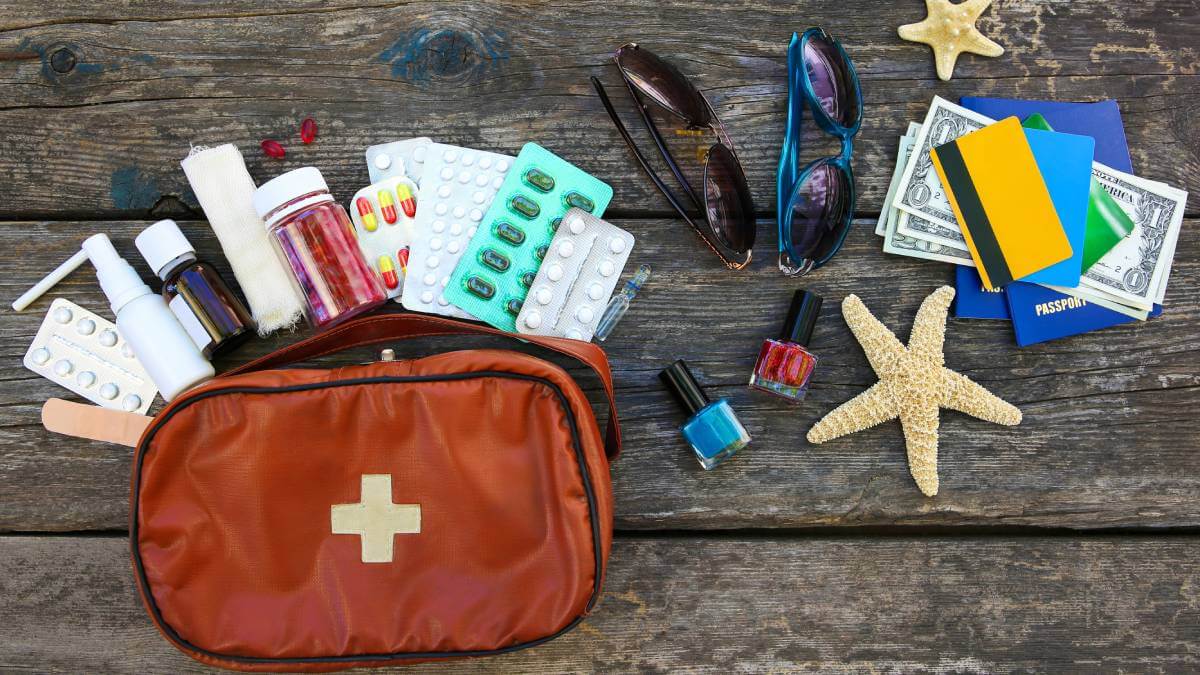It would be a rare traveller who didn’t take any medication while travelling, but there is an online travel tip where risk could outweigh convenience.
A TikTok travel ‘hack’ suggested putting any medication into smaller containers to save on space.
The TikToker recommended Tic Tac containers as ideal, to which I can only say ‘oh wow’.
For a start, putting medication into lolly packaging is asking for trouble. All you need is for a child to see the packaging and help themselves for a holiday to turn nasty.
That’s the reason why medical packaging has child-proof features to begin with, to prevent children from mistaking them for a lolly, or treat.
So that’s the obvious one, but there are a few more points to consider.
Wrap it up
For a start, sometimes the packaging is required to keep the medication effective.
Director of UK pharmacy chain Landy’s Mitesh Desai told the Press Association that it was vital to keep any medication in its original container.
“Medical packaging is designed to protect medication from interacting with elements such as light, heat, moisture, and air, which can degrade the potency of medicine over time,” he says.
“When you remove your medication’s original packaging, exposure to external elements can reduce the stability of the medication’s formulation and contribute to a potential loss of therapeutic benefits.”
If you do need to travel with medication, there are a few other good ideas to keep you, and those around you, safe.
Before you travel, make sure you have enough medication to cover your trip and any possible delays. Ask your doctor for a repeat prescription if possible.
Make sure your travel insurer will cover pre-existing conditions, replacing any vital medical devices if they are lost, damaged or stolen, medical evacuation and medical appointments.
Check the fine print
Be aware most insurers won’t cover prescription medication, even if it’s stolen or you are hospitalised, so if you want this cover, you may have to go to a specialist broker.
You can only take prescription medicine out of Australia if it’s for personal use. There are also legal limits to the amount of medication listed on the Pharmaceutical Benefits Scheme (PBS) you can take out of the country. If you are found to be over these limits you could face fines of up to $11,000 or up to two years in prison.
If you are travelling overseas and are concerned if your medication is illegal at your destination, the best course of action is to contact the country’s embassy, high commission or consulate. Try to get the answer in writing.
If it is legal, you should still carry a letter from your doctor stating why you need it or print and fill out a Medicine Export Declaration form for customs.
If your medication is illegal at your destination, ask your doctor if there is an alternative they can prescribe.
Money savers
Another good reason to make sure you have enough medication for your trip is that many medications that are cheap on the PBS can be very expensive overseas. For example, the average cost of an inhaler in the US is almost US$300, although you can buy a generic brand for around US$50.
And while Australia does have reciprocal health care agreements with several countries, you should still purchase travel insurance.
The agreements are designed for urgent care that can’t wait until you get home. Some situations, including medical evacuations and non-subsidised medicines, will not be covered.
Every agreement is also different, so you should check them out before you travel to tailor your insurance if needed.
What are your strategies for travelling with medications? Do you make sure your travel insurance covers all your needs? Why not share your experience in the comments section below?
Also read: How to keep your car and house safe while you are away

